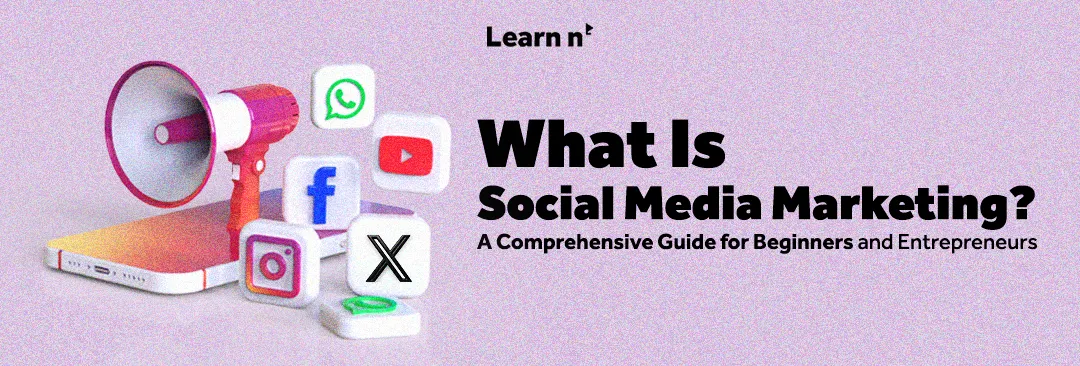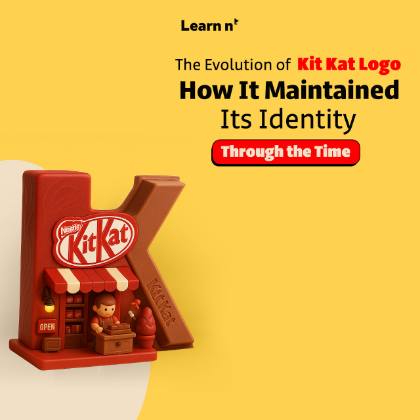
Launching a brand in today’s digital age requires more than just a great product or service — it demands a well-thought-out content strategy on social media platforms. A strategic approach to social media can boost brand visibility, attract potential customers, and build a loyal audience base. By understanding your target audience, creating engaging content, and using analytics, you can successfully launch and grow your brand, ensuring long-term success in a competitive market.
What Is Social Media Marketing?
In recent years, social media marketing has become one of the primary methods businesses and small enterprises use to connect with their audiences. These platforms are no longer just tools for entertainment — they’ve evolved into major arenas for sharing ideas, showcasing products, and encouraging strong customer relationships.
If you're an entrepreneur or considering stepping into the world of digital marketing, understanding this type of marketing can help you achieve tangible results, especially in an environment where the number of users on digital platforms continues to grow daily.
Social media marketing involves using platforms like Facebook, Instagram, X, LinkedIn, and TikTok to deliver marketing messages, promote products or services, and engage effectively with a target audience. But it goes beyond simply posting content — it includes interaction, performance analysis, and strategy refinement based on data.
Effective social media marketing requires a people-centric approach that emphasizes simplicity and clarity. Its primary goal is to build trust-based relationships, not just to drive sales.
Also know: What is Marketing Mix?
The Importance of Social Media Marketing
- Quick Reach: People spend a significant amount of time on social media platforms. Being active where your audience is increases the chances of your brand being seen.
- Flexible Interaction: You can tailor your messages, experiment with different content types, and engage instantly with your audience.
- Cost-Effective: Compared to traditional advertising, social media marketing is more affordable and offers measurable result
- Continuous Analytics: Built-in analytics tools help you monitor the performance of your posts and ads, enabling smarter, data-driven decisions.
Top Social Media Platforms and Their Uses
- Facebook: Caters to a wide range of age groups and is ideal for varied content like text, images, videos, and live streams.
- Instagram: Focused on visual content. Perfect for products, fashion, food, and anything that benefits from striking photos and short videos.
- TikTok: Appeals to younger audiences. Known for short, creative videos and fast content virality.
- LinkedIn: A professional networking platform. Ideal for B2B services and building business relationships.
- X: Great for real-time news, updates, and public conversations
Types of Social Media Content
- Educational and Awareness Text Posts: Great for building trust and sharing valuable information.
- Static Graphics: Ideal for highlighting promotions, quotes, or announcements.
- Short Videos: Formats like Reels and TikToks are easy to engage with and offer fast reach.
- Stories: Perfect for real-time interaction, such as polls or Q&A sessions.
- Live Streams: Enable direct communication with your audience and real-time feedback.
- Interactive Content: Includes quizzes, polls, and other formats that encourage audience participation.
Effective Social Media Marketing Strategies
- Define Your Goals Clearly: Are you aiming to increase sales, build brand awareness, or drive traffic to your website?
- Understand Your Target Audience: Who are they? What do they prefer? How do they behave online?
- Create a Content Calendar: Helps with planning, consistency, and organization.
- Experiment with Different Content Types: This helps you discover what generates the highest engagement.
- Monitor Results Regularly: Use insights to adjust your content and strategy for continuous improvement.
Defining Your Target Audience Precisely
Start by collecting demographic information such as age, gender, interests, and location. Use tools like Google Analytics and Meta Insights to gain deeper insights into your audience.
Then, create personas that represent your key audience segments. For example: “A young mother looking for educational content” or “An entrepreneur who enjoys short videos.”
The more accurate your understanding of your audience, the more successful your campaigns and content types will be.
Creating a Monthly Content Plan
A content plan helps you maintain consistency and save time. Begin by identifying seasonal occasions, topics relevant to your audience, and the goals you want to achieve.Use tools like Trello or Google Sheets to gather and organize your ideas by week or platform.
Don’t forget to keep your plan flexible. Leave room for timely content or unexpected events.
Using Influencer Marketing
Content creators and influencers can help your brand reach new audiences. However, it’s important to choose the right person whose style aligns with your business. Simply, don’t just look at follower count; focus on engagement rates and the authenticity of the messages they share.
Collaborate with micro-influencers, as they often have higher engagement rates. Long-term partnerships tend to be more effective than short campaigns.
Make sure your partnership aligns with your marketing goals: are you aiming to increase sales or expand brand awareness? This will help you design realistic and measurable campaigns.
Focusing on Engagement More Than Follower Count
True success is measured by engagement, not just follower numbers. Comments, messages, shares, and the overall interaction with your content indicate an actively engaged audience.
Responding to questions or comments adds a human touch to your account and makes people feel there is genuine communication—not just silent posts.
Track key metrics such as Click-Through Rate (CTR), reach, and conversion rate, as these reveal the real impact of your efforts.
Engaging with Your Audience and Responding to Comments and Messages
- Replying to a comment or message can make a significant difference in a customer’s relationship with your brand.
- Use a human and friendly tone in your responses. Thank your followers, answer their questions, and apologize if a customer faces any issue.
- Sometimes, simple engagement is what turns a follower into a loyal customer.
Continuous Analysis and Strategy Adjustment
- Social media does not operate the same way all the time. Today’s success doesn’t guarantee tomorrow’s. It’s important to monitor changes and test new ideas.
- Track your content’s performance weekly or monthly. Use analytics tools to understand which types of content deliver results and the best times to post.
- Build on your successes, and adjust posts or content types that underperform. Continuous improvement is the key to success.
Conclusion
Social Media Marketing is no longer a luxury or an optional extra. It is a necessity for any business that wants to build genuine connections with its audience and achieve tangible results.
With a clear plan, diverse content, and ongoing engagement, you can build a strong presence that sets your brand apart in a crowded market.
Start with simple steps, get to know your audience, try new ideas, and always be in a state of development. Success doesn’t come all at once; it is the result of persistence, learning, and careful tracking of results.

Author
Learn n’ Digital Team














